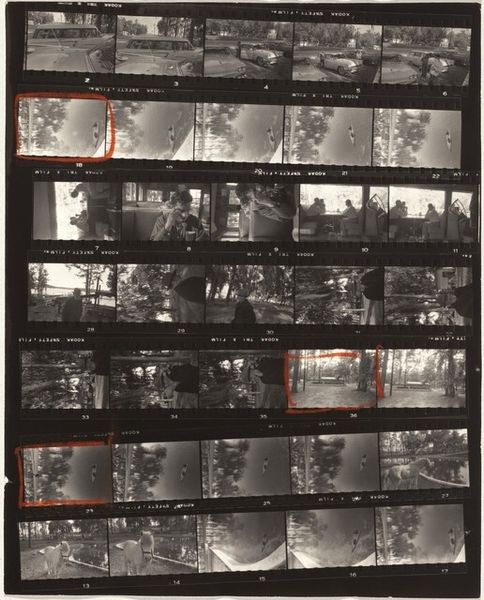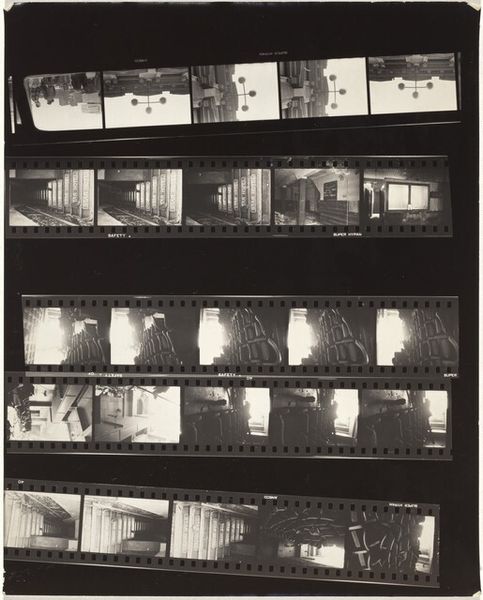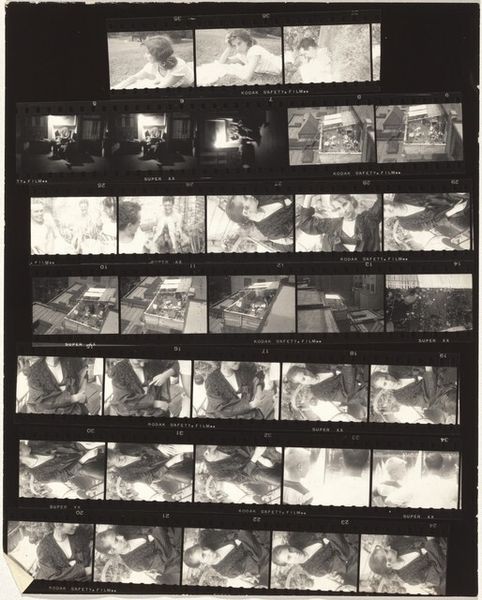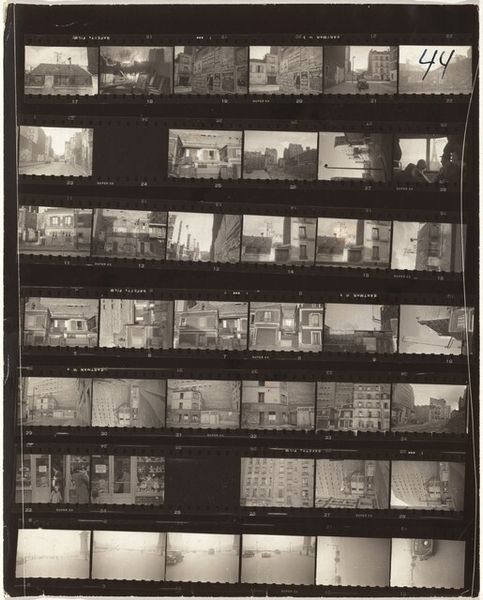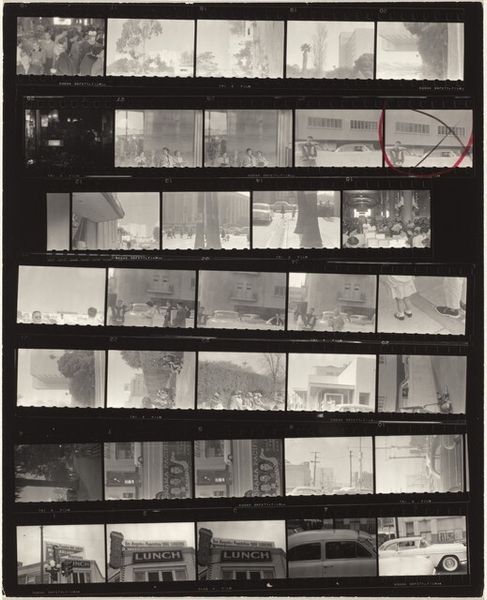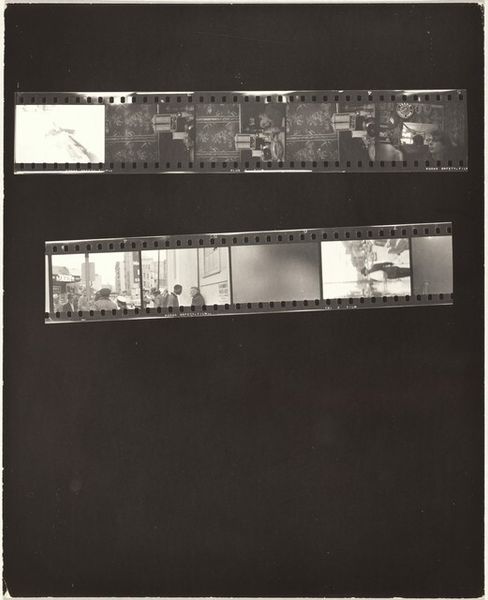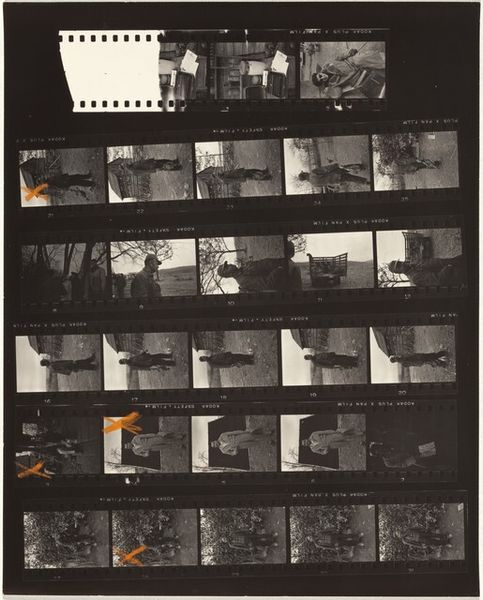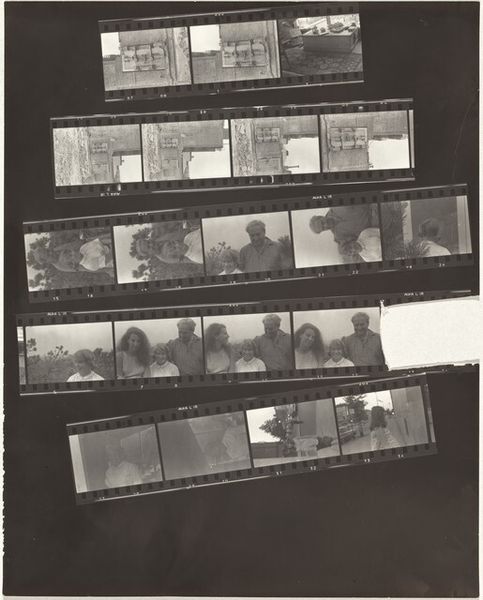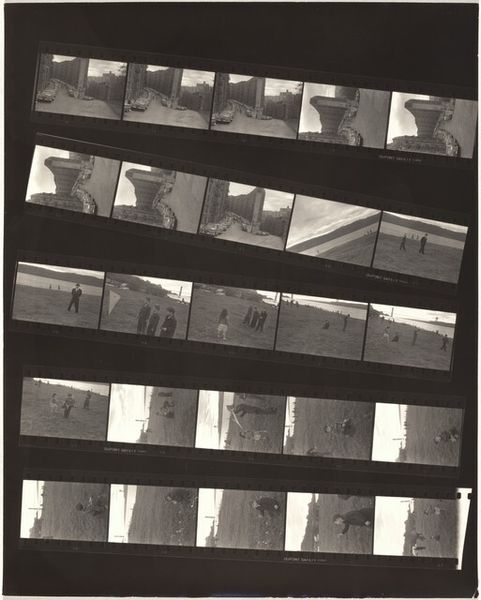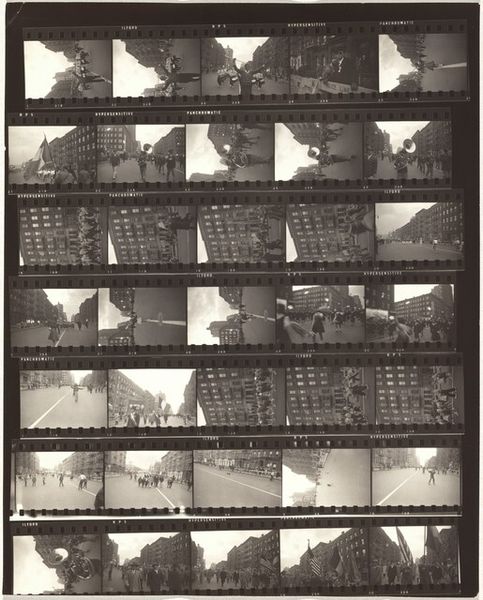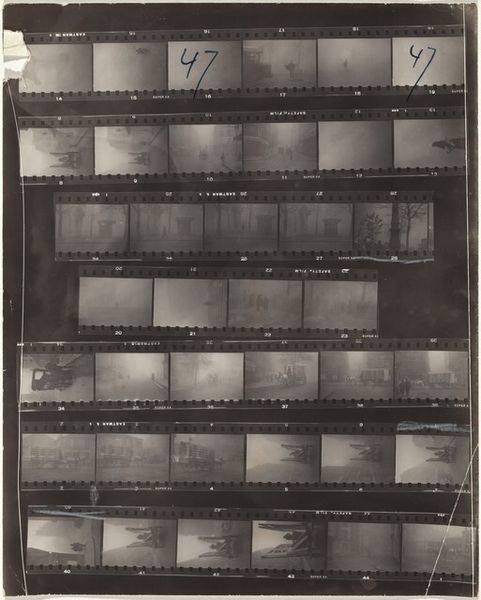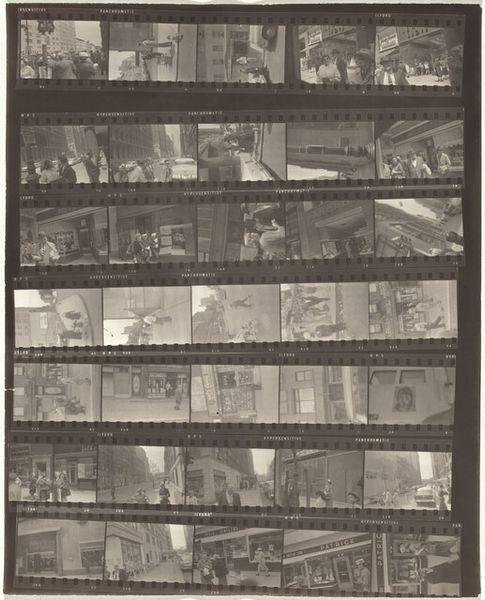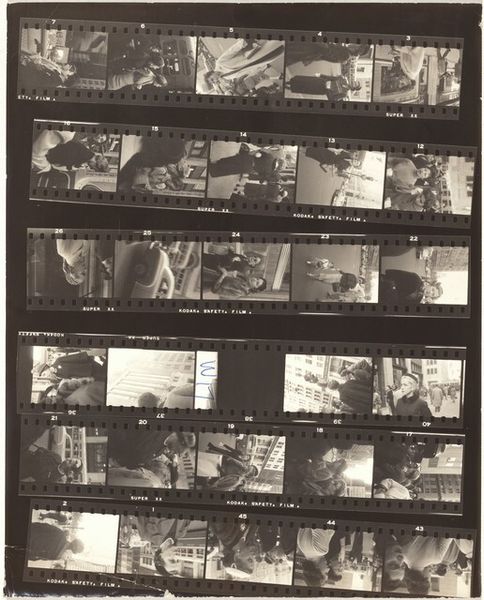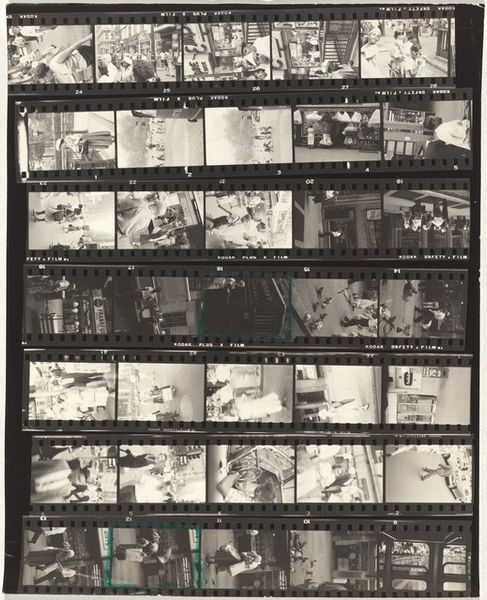
print, photography, gelatin-silver-print
# print
#
landscape
#
street-photography
#
photography
#
gelatin-silver-print
#
monochrome photography
#
cityscape
#
modernism
#
monochrome
Dimensions: overall: 25.2 x 20.2 cm (9 15/16 x 7 15/16 in.)
Copyright: National Gallery of Art: CC0 1.0
Curator: Robert Frank's gelatin silver print, "From the bus 49," made in 1958, offers us a window into his distinctive vision. What's your initial take on this sheet of contact prints? Editor: My first impression is fragmentation, a shattered narrative. Each frame feels like a fleeting thought, capturing the mundane yet hinting at deeper stories. It reminds me of early silent films and their narrative compression. Curator: An interesting comparison. Formally, I see Frank exploring the inherent qualities of photography. The graininess, the stark contrast of light and shadow, and the off-kilter angles—all contribute to a raw aesthetic that challenges conventional photographic standards. He is toying with visual syntax and deconstructing a standard order of frames on photographic film. Editor: Absolutely, the visual language is quite strong. Looking at the sequence as a whole, I'm struck by the repetition of figures in transit—on the street, seemingly waiting—each one carrying their own unspoken story. Are we perhaps seeing an allegorical image of post-war disconnection? The anonymity of the people creates an intriguing tableau. Curator: Perhaps. The film strip is almost like a score, suggesting rhythm and temporality. There is a sense of constant motion. You could arrange these prints as building blocks within a wider montage. Editor: It definitely creates that effect. Take that solitary figure in the central frames, dwarfed by the urban landscape, set against what looks like mundane apartment block; they're potent images when we think of modern urban loneliness and how it permeates visual art of this period. Curator: It speaks to how Frank distilled emotion, and narrative, within the constraints of photographic structure. Each photograph can have multiple narratives, but as an art object it speaks of composition. Editor: Exactly. For me, it's about how Frank uses recognizable urban elements, like streets and buildings, as archetypes within these tightly constrained pictures to tap into something universal. Curator: His work certainly makes one reflect on how formalism shapes our interpretations. Thanks for your insights. Editor: And thank you; I am reminded how critical an art object's composition and display are to its narrative weight.
Comments
No comments
Be the first to comment and join the conversation on the ultimate creative platform.
